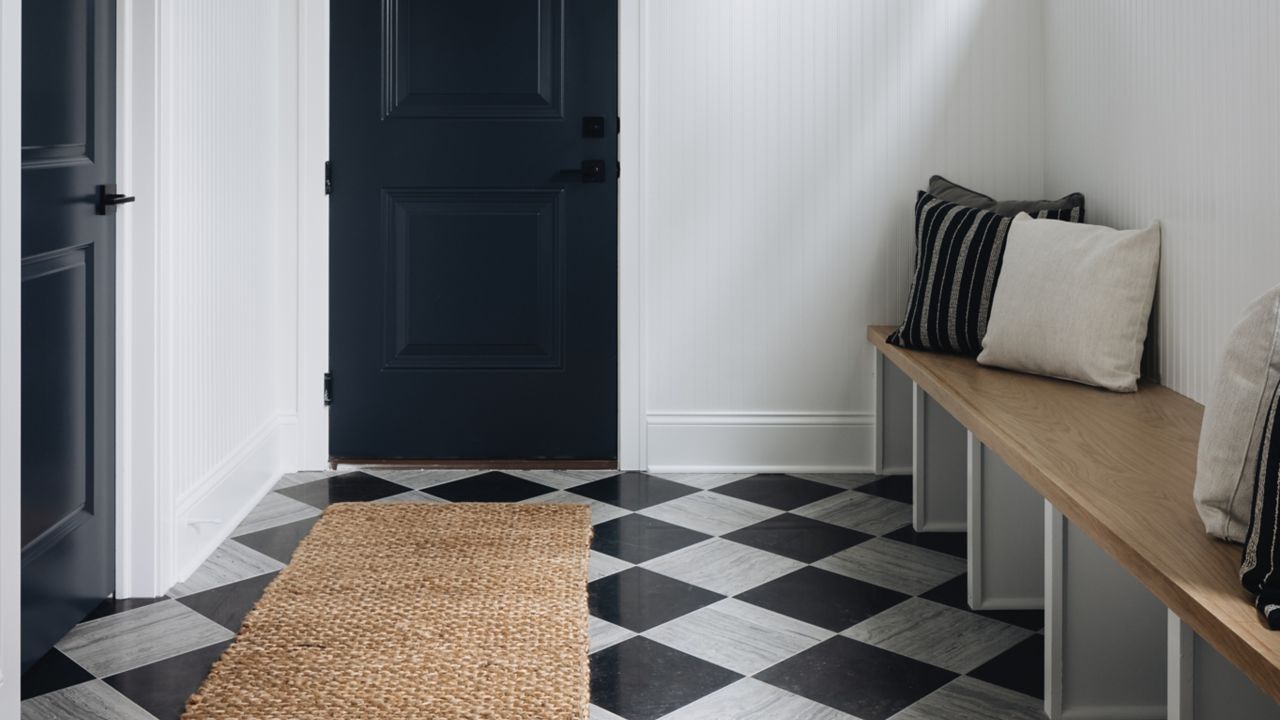How to Clean Limestone Tile

Cleaning limestone floor tiles requires a gentle approach to prevent damage and maintain their natural beauty. In this article we will go over each step of the cleaning process as well as other tips for how to keep your limestone tile looking its best.
What You'll Need
- Bucket
- Soft bristle broom or vacuum with soft brush attachment
- Dish soap or stone cleaner
- Microfiber cloth
- Soft towels
Do a Dry Cleaning
Start by sweeping with a soft bristle broom or vacuuming your limestone floors using a soft brush attachment to remove loose dirt and dust. This helps prevent scratches while mopping. If you plan to use a vacuum for this step, you should either make sure the vacuum does not have a beater bar or use a hose attachment with a soft brush.
Prepare the Cleaning Solution
For washing the tile, you can use either a few drops of dishwashing liquid or a
commercial stone floor cleaner. Dilute your preferred cleaning agent in warm water. If you are using a commercial product, carefully follow the manufacturer's instructions to avoid damaging your limestone tile. Do not use harsh chemicals, vinegar and ammonia, as they can quickly discolor or etch the limestone.
Mop the Floor
Using a soft mop, dunk the mop in the bucket to get it thoroughly soaked, then wring it out so it is only slightly damp. Limestone is porous, so using excessive water while mopping may cause water to seep in and damage the tiles or grout. Mop in sections, rinsing the mop frequently in clean water to prevent spreading dirt and to avoid letting the floor sit saturated for long periods.
Dry with a Towel
Use a soft towel, thoroughly dry the tiles. The limestone tile should not stay wet for extended periods, as this leads to residual water marks that can make the floor look dirty.
Regular Maintenance
Small scratches from dirt and debris can begin to add up over time and can impact the look of your limestone tile floors. Daily sweeping or vacuuming is the best way to keep your limestone tiles clear. It is also a good idea to place doormats at entry points to trap dirt and debris before they reach the limestone floors and to use felt pads under furniture legs to prevent scratches.
The Importance of Sealing Limestone Tile
Sealing your limestone tiles is the number one way you can ensure they stay scratch free and do not retain moisture. This will keep them from getting stained or scratched as well as prevent mold and mildew from forming. To maintain the sealer's effectiveness, you should plan to reseal the tile every three to five years, depending on manufacturer specifications and the amount of regular wear they receive.
Limestone tiles installed in outdoor spaces will require more attention to the resealing schedule because they are exposed to sun, rain, wind, and extreme temperatures. These elements can cause the sealant to deteriorate faster than with indoor tiles. Regular inspection and resealing every one to three years is recommended to maintain protection.
Ideally, your limestone floors should be sealed with a penetrating sealer. If you are unsure about your limestone's sealing status, consult a professional or test a small, inconspicuous area by pouring a small amount of water directly onto the tile. If the water beads, your sealer is in good shape. If the tile starts to absorb the water, dry it as quickly as possible and reseal the tile.
Deep Cleaning Limestone Floors
If your limestone floors are stained or have a buildup of deeper grime, you can deep clean them. When regular cleaning does not get the job done, consider these more advanced options.
Steam Cleaning
Unlike some other natural stone materials, using a steamer is a safe and effective way to deep clean limestone tiles. A microfiber pad attachment is necessary to avoid scratching the tile, and the steamer should be set to a low or moderate steam setting. Move slowly and avoid concentrating the steam in one spot for too long. Dry the floor completely with a clean microfiber cloth afterward.
Deep Cleaning Solution
For stubborn stains or built-up dirt, consider using a commercial deep cleaning solution specifically designed for use on natural stone. Always follow the manufacturer's instructions for dilution and application to avoid damaging the limestone. This can be a safe and highly effective way to restore stained limestone to its natural beauty.
Professional Stone Cleaners
For stains that are not removed by using a commercial deep cleaning solution, resist the urge to use harsh chemicals. Instead, you should call a professional stone cleaner. They will know how to address the specific sort of stain that is plaguing your limestone tile and will have the tools and knowhow to either clean it or replace it.